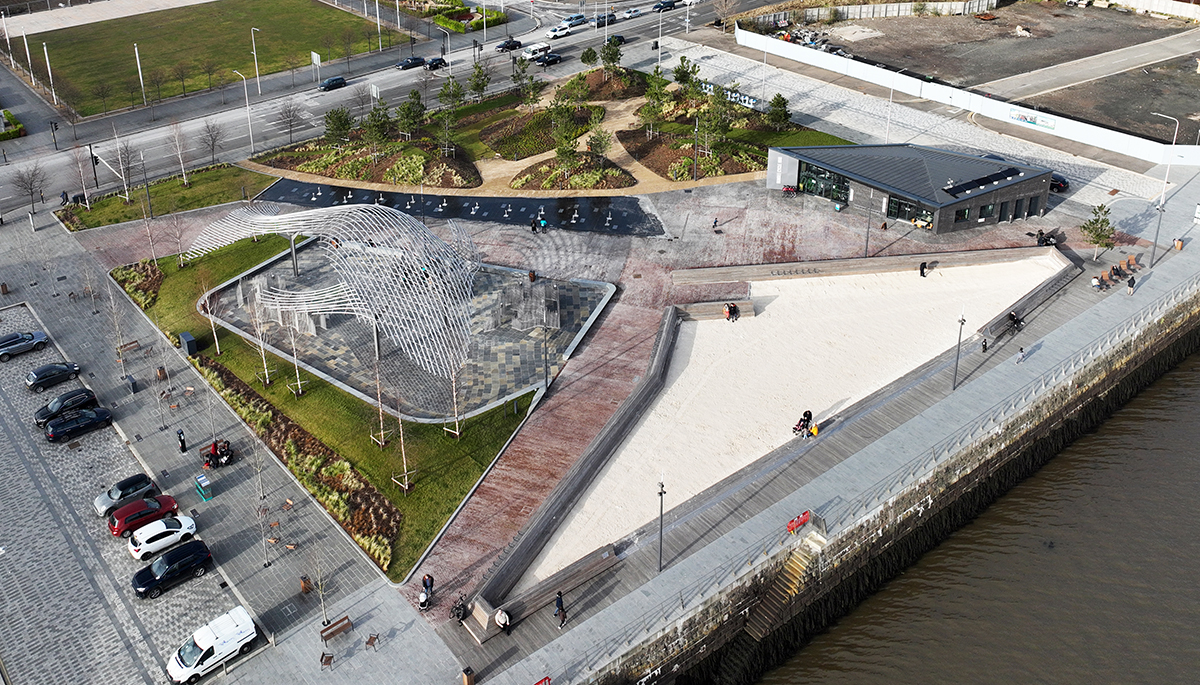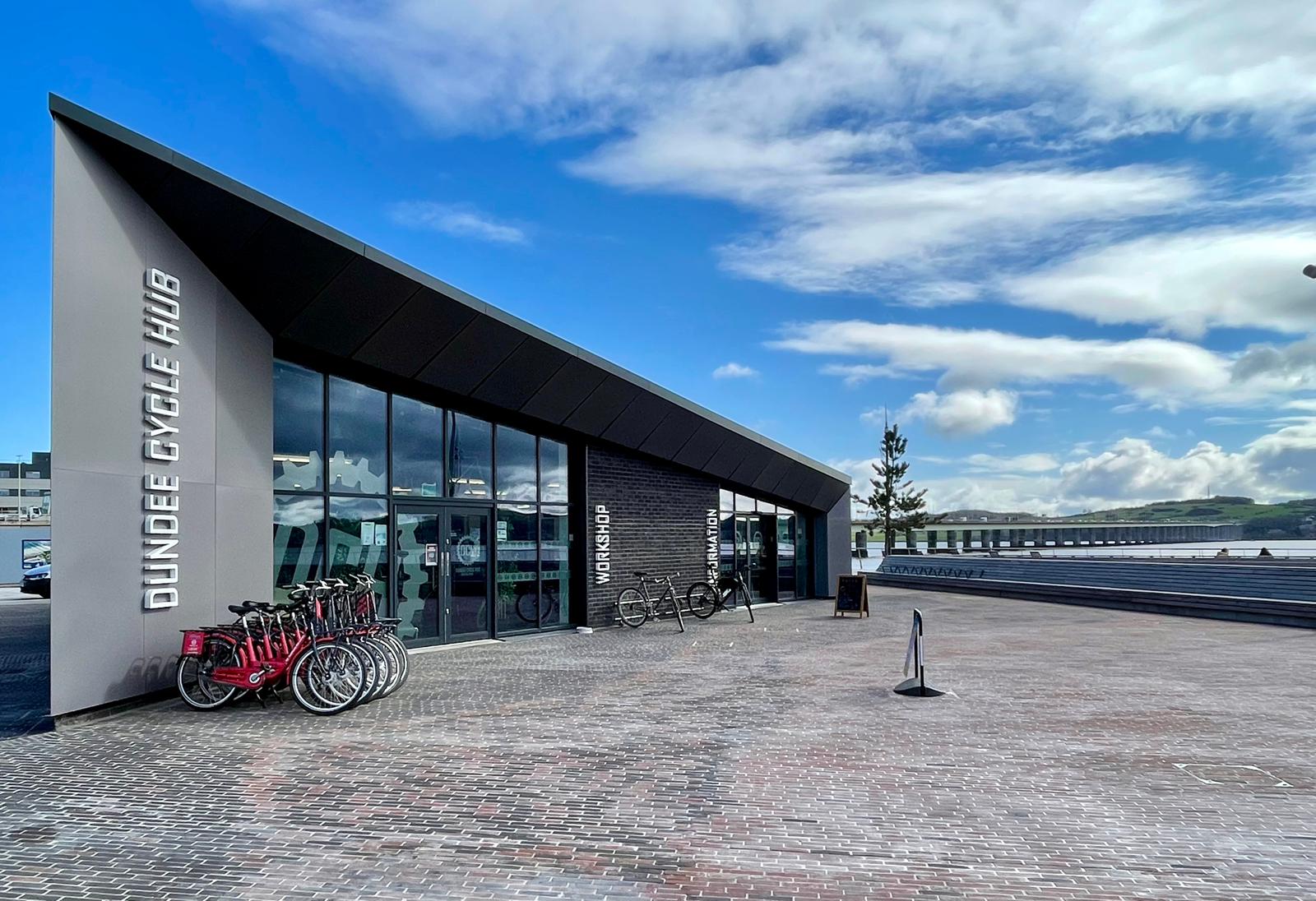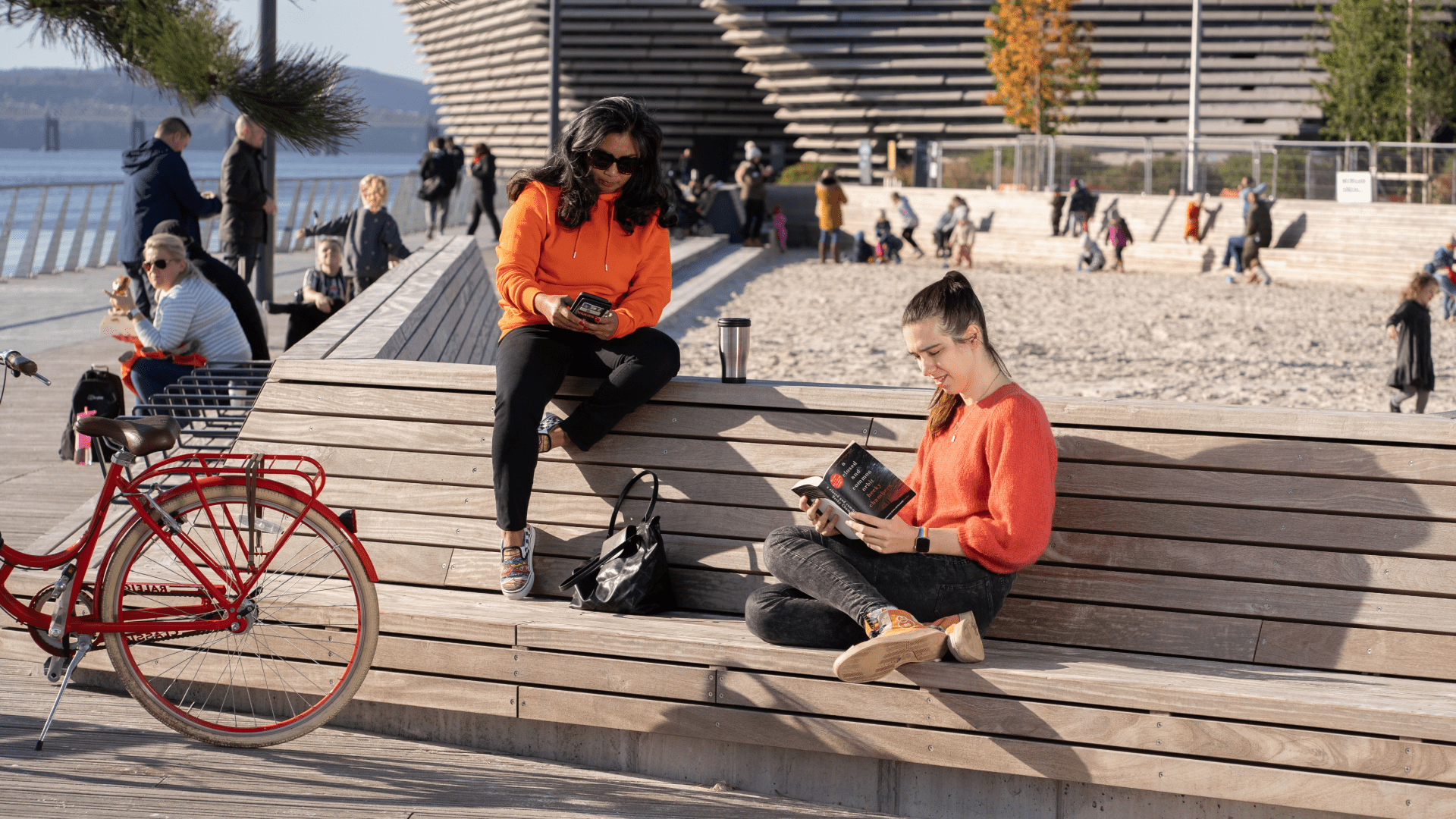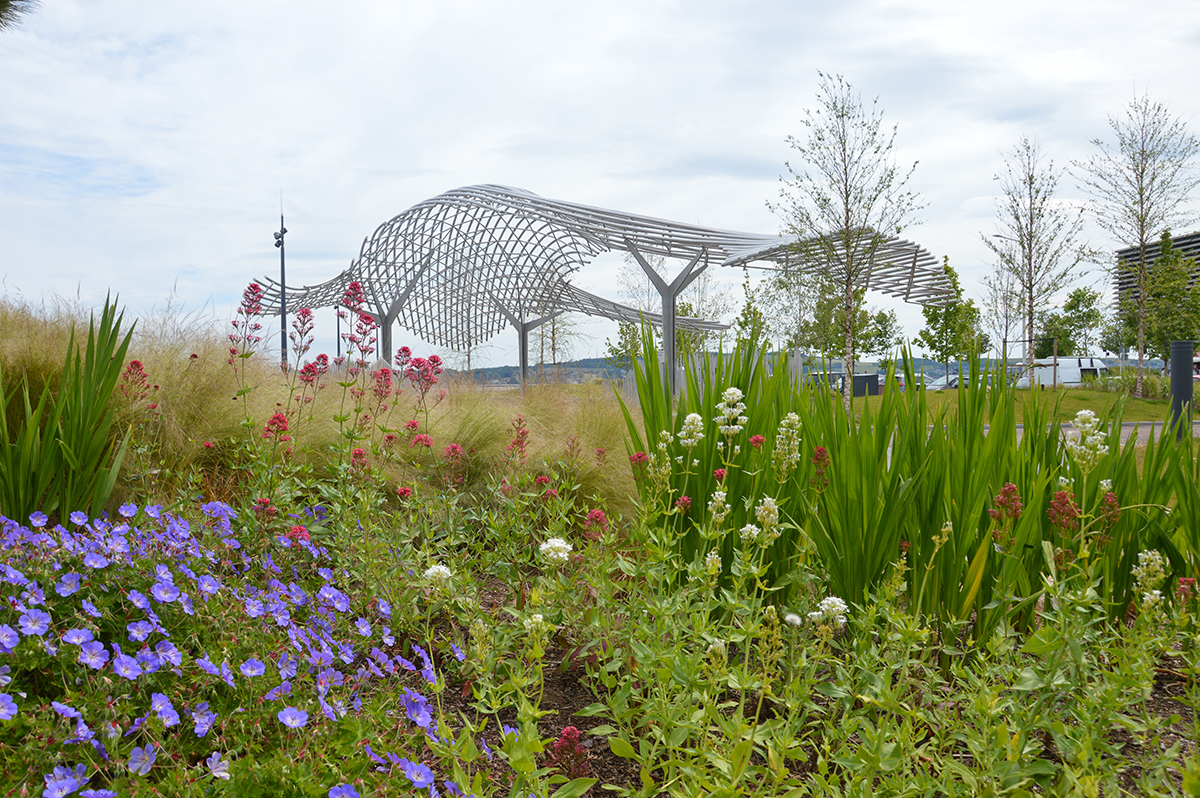
THE transformative Waterfront Place project in Dundee – featuring an urban beach, active travel hub, public art, interactive play area, and public realm and event space on the edge of the River Tay – has been shortlisted in the Landscape and Public Realm Project category at the annual Architects’ Journal Awards.
The development, which forms part of the wider £1 billion Dundee waterfront regeneration, was officially opened last year and has played a key role in connecting the city of Dundee with the waterfront.
At the heart of the project sits a giant stainless-steel whale sculpture and the entire development beautifully complements the adjacent V&A Museum, which has been a magnet for visitors to the city.
The £8 million Waterfront Place scheme was a collaboration between architects Holmes Miller, Morgan Sindall Construction, Optimised Environments, artist Lee Simmons, and Dundee City Council.
Chris Wotherspoon, associate at Holmes Miller, told Project Scotland of his pride at seeing the space extensively used by the public during a recent trip to the city.
“A key objective for Waterfront Place was to create an inclusive space that can be accessed by all regardless of age, ethnicity, socio-economic status, disability or gender,” he explained. “When I visited during the summer, it was wonderful to see so many people enjoying the space, particularly a young wheelchair user who was playing in the fountains with his friends. They’re the little moments when you think that’s exactly what we wanted to achieve.”
The brief for the project included a strong focus on active travel and sustainability. The site has provided a home for Dundee Cycle Hub, which offers bike hire. Chris explained the hub, which hosts a café and toilet space, has also provided a place for children to dry off after playing in the water features – adding to the whole interconnected nature of the site.

Sitting next to the iconic V&A Museum, there was pressure on the design team to ensure the Waterfront Place initiative lived up to its stunning surroundings.
“We recognised the importance of the site and the opportunity to create something truly unique for Dundee that celebrates the city’s relationship with the Tay,” Chris added. “We knew the whale sculpture would form part of the development, so a lot of maritime influences feature throughout the site.
“Researching how the V&A was designed, with rugged Scottish contours of landforms, also informed the form and massing of the development ensuring the public realm became a holistic part of the museum’s design.”
As with so many construction projects over the past two years, one of the biggest challenges was navigating the difficulties posed by the pandemic. Chris recalled that no sooner had a spade gone into the ground on the development when the whole country went into lockdown.
“Everyone in the construction industry will have endured the same challenges at the time,” he said. “We had to adapt to whole teams on furlough and try to work our way through project changes remotely away from traditional ways of working.
“Despite these challenges, this was a project where the stars seemed to align with our project partners and client. The pandemic highlighted how important well designed public spaces are for our health and wellbeing and, with this in mind, when we encountered the challenge of the pandemic everyone just clubbed together and got on with the job.”
Other challenges included logistical issues around dealing with bespoke sand for the urban beach and the small matter of transporting a 22-tonne whale sculpture from where it was fabricated in Southampton.

“The sculpture was sailed up to Dundee,” Chris revealed. “There was this brilliant moment where the whale literally came out of the River Tay to take its place on the site!”
Feedback on the project has been hugely positive, with the area becoming a major ‘hotspot’ in the city. Considering this was a space rarely used previously, it has undoubtedly been transformative for the location.
As well as the Architects’ Journal Awards shortlisting, the project was also nominated for a Scottish Design Award and Civic Trust Award earlier in the year. Chris hopes the success of the Waterfront Place site will encourage more investment in public spaces.
“As a practice, Holmes Miller is committed to the creation of people-focused architecture, and work hard to make sure projects like Waterfront Place are a success,” Chris said. “It’s really encouraging to receive industry recognition for those efforts.
“It’s fantastic that a project that focuses on placemaking, focuses on public space, and focuses on the environment, is something that’s being celebrated. It’s a good message for the wider industry and for local authorities that investing in public space is the way to go.”












